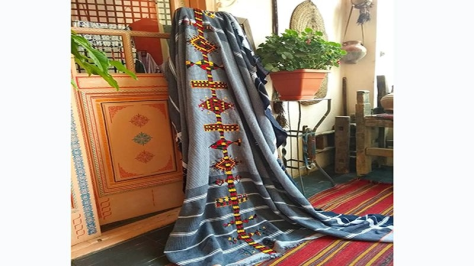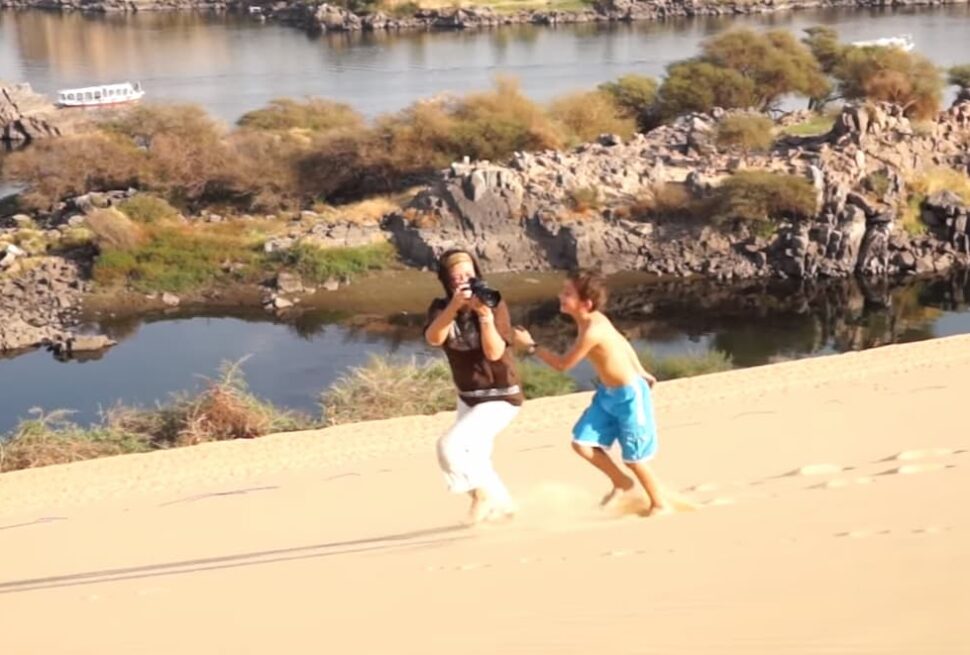
Introduction
When I first visited Siwa Oasis, I was captivated not just by its breathtaking scenery but also by the vibrant display of handmade art that adorned every corner. The artisans I met shared stories behind their crafts, revealing a rich tapestry of tradition and culture woven into every piece.
Why Handmade Art Matters
Handmade art isn’t just an accessory or decoration; it serves as a connection to identity, community, and history. Here’s why it caught my attention:
- Cultural Significance: Each item tells a story, preserving generations of tradition.
- Artisan Connection: You can feel the passion and dedication put into creating these unique pieces.
- Sustainable Practices: Many artisans employ eco-friendly methods, promoting sustainable living.
Join me as we explore the heart of Siwa’s handmade art further and uncover its profound impact on the local community and beyond!

The Rich History of Siwa’s Handmade Art
Stepping deeper into Siwa’s artistic landscape, I was fascinated by its rich history, shaped by age-old techniques and the unique materials sourced from the surrounding environment.
Traditional Techniques and Materials
Throughout my journey, I discovered that Siwa’s artisans hold dearly to traditional crafting techniques. Many of them use:
- Natural Dyes: Sourced from local plants and minerals, giving each piece vivid colors that are completely biodegradable.
- Handwoven Textiles: Utilizing a loom, they create intricate patterns that reflect the rich cultural heritage of the Berber tribes.
- Clay Pottery: The clay is harvested from nearby deposits, shaped by skilled hands and often adorned with beautiful carvings.
These methods are not merely for aesthetics; they ensure that every item carries a sense of authenticity and connects to nature.
Historical Significance
As I listened to artisans share tales of their craft, I realized the historical significance goes beyond the art itself. For instance:
- Cultural Heritage: Handmade art reflects the stories of Siwa’s ancestors, preserving traditions that have survived for centuries.
- Trade Routes: Historically, Siwa was a hub for trade, and its unique crafts became valuable commodities along ancient trading routes.
This rich history not only influences the present art scene but also provides a sense of pride and belonging within the community. It’s a legacy being passed down, a tapestry woven together by both time and talent.
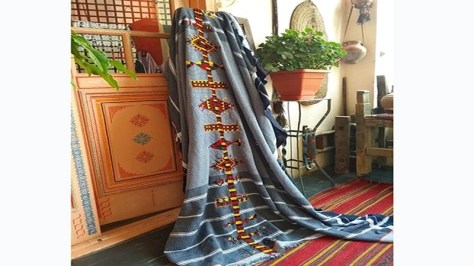
The Role of Handmade Art in Siwa’s Culture
As I continued to explore Siwa, it became clear that handmade art plays a pivotal role in shaping the local culture. It’s not just about creation; it’s about weaving together threads of history, identity, and community.
Cultural Preservation
One of the most touching aspects I observed was how artisans passionately strive to preserve their cultural heritage through their craft. For them, every piece of art is a symbol of their identity. Here are a few ways this preservation manifests:
- Storytelling Through Craft: Each design and motif often tells a story or represents a local legend, keeping ancient traditions alive.
- Workshops and Training: Many artisans conduct workshops, ensuring younger generations learn these techniques and understand the historical value behind their art.
- Community Events: Festivals dedicated to celebrating handmade art allow locals to showcase their skills, sparking a revival in interest and appreciation.
Community Identity
In Siwa, handmade art is more than just a pastime—it’s a vital part of the community’s identity. During my visit, I noticed how proud the locals were to share their artistry with visitors. Here’s how handmade art fosters that sense of identity:
- Collective Memory: The art serves as a reminder of the shared experiences, struggles, and triumphs of the community.
- Unity: Collaborative projects among artisans cultivate a spirit of teamwork and solidarity.
- Cultural Exchange: As tourists purchase handmade goods, they not only support local artisans but also become ambassadors of Siwa’s culture.
Through these connections, handmade art truly embodies the spirit of Siwa, making it a living testament to the community’s values and aspirations. Each piece is not just an object; it’s a part of Siwa’s soul.
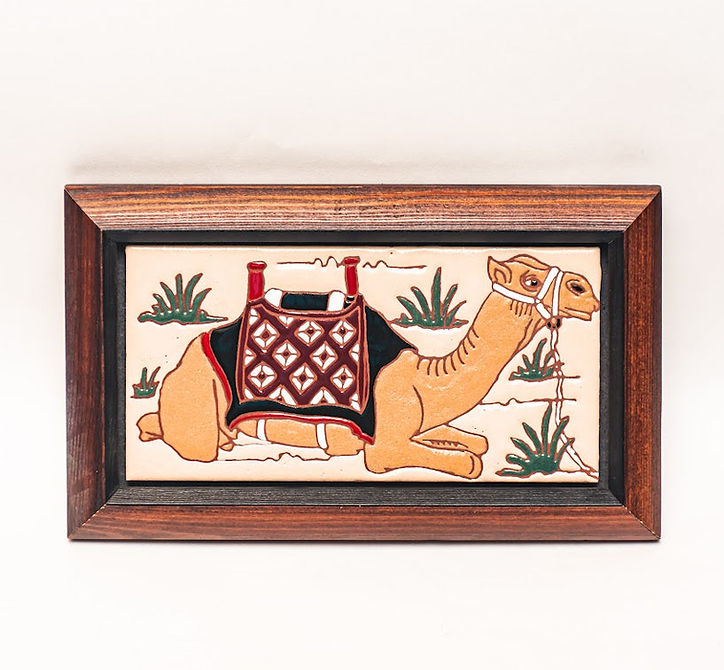
Influences on Siwa’s Handmade Art
As I delved further into the artistic landscape of Siwa, I quickly realized that various influences shape the unique character of its handmade art. These influences, deeply rooted in both geography and culture, contribute to the richness I’ve come to love.
Geographical Influences
Siwa’s stunning natural environment plays an undeniable role in shaping its art. I often found artisans drawing inspiration from the landscape around them. Some key aspects include:
- Local Materials: The oasis is rich in clay, palm fibers, and vibrant natural dyes, which artisans skillfully incorporate into their creations.
- Desert Aesthetics: The colors and patterns found in their art often mirror the serene dunes, sunsets, and abundant greenery of the oasis, creating pieces that feel truly connected to their surroundings.
- Natural Motifs: Elements of nature—such as plants, animals, and celestial bodies—frequently appear in designs, reflecting the artists’ admiration for the beauty of the Siwan wilderness.
Cultural Influences
In addition to its geographical uniqueness, Siwa’s rich cultural tapestry significantly influences its handmade art. The blend of ancient Berber traditions with contemporary practices creates a vibrant fusion. Here’s how:
- Legacy of the Berbers: The traditional techniques and designs have strong roots in Berber culture, each echoing the stories and history of the community.
- Fusion of Traditions: Interactions with neighboring cultures have resulted in diverse styles and practices being adopted, enriching Siwa’s art scene.
- Ritualistic Significance: Many pieces are created for specific cultural events, reflecting the deep connection between art and ceremonial life in Siwan society.
It’s remarkable how both geography and culture intertwine to shape the handmade art of Siwa, creating unique pieces that tell a story of a land and its people. Through every artwork, you feel a touch of the earth and a whisper of history, making each piece a true treasure.

The Process of Creating Handmade Art in Siwa
As I continued my exploration of Siwa’s artistic realm, I marveled at the intricate processes artisans employed to bring their creations to life. The stories behind each piece often revealed a fascinating world of collaboration and sustainable practices.
Collaboration Among Artisans
One of the most inspiring aspects I witnessed was the deep sense of community among Siwa’s artisans. Their collaborations foster creativity and build lasting relationships. Here are some insights into this beautiful camaraderie:
- Shared Workshops: Artisans often work side by side in communal spaces, exchanging techniques and ideas that enhance their craft.
- Collective Projects: Large-scale works, such as community murals or sculptures, bring artisans together, showcasing their skills and fostering unity.
- Mentorship: Experienced artisans frequently take younger artists under their wing, ensuring the preservation of traditional techniques while encouraging new perspectives.
This collective spirit not only results in breathtaking art but also strengthens communal bonds, making the art more vibrant and full of life.
Sustainable Practices
I was particularly impressed by the emphasis on sustainability within Siwa’s handmade art scene. Artisans demonstrated a profound respect for their environment, incorporating eco-friendly practices into their work:
- Use of Natural Materials: Local plants, clay, and minerals minimize the environmental impact while fostering authenticity in their creations.
- Traditional Techniques: Many artisans still utilize age-old methods that require minimal resources and communal involvement, reducing waste.
- Recycling Initiatives: Some artisans collect and repurpose old materials, giving new life to remnants while contributing to a circular economy.
Witnessing these sustainable practices reaffirmed my belief that art could be both beautiful and responsible. Each piece created in Siwa tells a story not just of aesthetics, but of stewardship and respect for nature, ensuring that future generations can continue to enjoy and learn from this rich artistic heritage.

The Global Impact of Siwa’s Handmade Art
As I ventured deeper into the world of Siwa’s handmade art, I was struck by its far-reaching global impact. This art form not only reflects local culture but also carries the stories of its artisans beyond the borders of the oasis.
Export Market
The artisanal crafts from Siwa have found a welcoming audience worldwide, contributing to a thriving export market. During my visit, I met several artisans who shared how they reached international customers. Here are some key points about this flourishing market:
- Online Platforms: Many artisans leverage social media and e-commerce platforms to showcase their work, connecting with art lovers far beyond Siwa.
- International Fairs: Participation in global craft fairs has allowed artisans to promote their art, exchange ideas, and establish valuable networks.
- Cultural Export: The unique aesthetic appeal of Siwa’s craftsmanship has led to collaborations with designers and brands looking to incorporate genuine, handmade products.
This growing export market not only boosts the local economy but also elevates Siwa’s unique identity in the global art scene.
Recognition and Appreciation
The global art community’s recognition of Siwa’s handmade art has been nothing short of uplifting. I could feel the pride among artisans when they mentioned awards and accolades received for their work. Here’s how this appreciation manifests:
- Art Exhibitions: International exhibitions have spotlighted Siwa’s artisans, fostering admiration for their unique styles and traditional techniques.
- Cultural Exchanges: Programs encouraging cultural exchanges help enlighten global audiences about the beauty and significance of Siwa’s craftsmanship.
- Documentation: Documentaries and features in global media highlight the stories of artisans, bringing their work to the forefront and generating interest in their craft.
Seeing the pride on artisans’ faces as they shared their journey and accomplishments was truly heartwarming. It reaffirmed the idea that handmade art from Siwa is more than just products—it’s a moment in history, a celebration of culture, and an enduring legacy that resonates around the world.
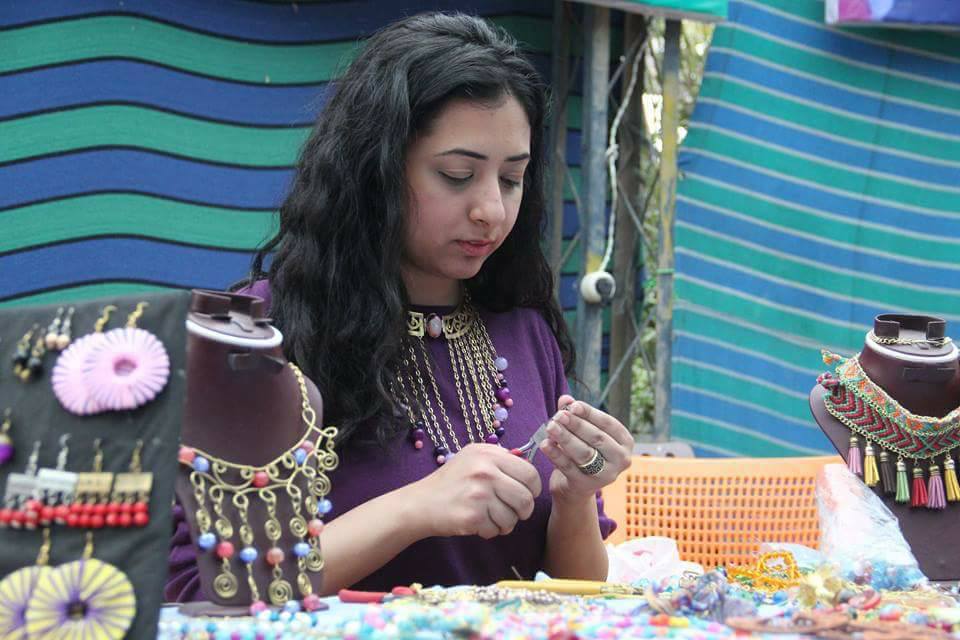
Challenges Facing Siwa’s Handmade Artisans
Despite the flourishing recognition and appreciation for Siwa’s handmade art, I quickly discovered that artisans face significant challenges that threaten their craft’s future. These issues highlight the delicate balance between preserving tradition and adapting to a rapidly changing world.
Economic Sustainability
During my conversations with local artisans, the struggle for economic sustainability became evident. Many shared stories of the difficulties in making a living through their craft. Key challenges include:
- Market Fluctuations: The demand for handmade goods can vary, leaving artisans vulnerable to economic shifts.
- Pricing Pressures: Competing with mass-produced items often forces artisans to lower prices that don’t adequately reflect the labor and materials invested in their work.
- Access to Resources: Limited access to tools and raw materials can hinder the ability to produce high-quality goods consistently.
Artisans often rely on a blend of creativity and resourcefulness to navigate these economic hurdles, yet the uncertainty remains a constant source of stress.
Balancing Tradition with Modernization
While I marveled at the rich traditions of Siwa’s handcrafted art, I also witnessed the challenges of modernization creeping into this world. Artisans often grapple with:
- Adapting Techniques: Some artisans feel pressure to modify their traditional methods to attract a broader audience or meet contemporary design trends.
- Technology Integration: Navigating new technologies for marketing and production can be daunting, particularly for those who have relied on age-old techniques.
- Cultural Dilution: There’s a lingering concern that embracing modernization could dilute the authenticity and significance of their traditional crafts.
While I appreciate the innovations brought about by modernity, it was poignant to see how artisans strive to maintain their cultural identity. This balancing act reflects their ongoing commitment to preserving the soul of their craft while navigating the complexities of a global art market. The stories of these artisans remind me that handmade art is not just about beautiful objects; it’s about the people, their struggles, and the cultural legacy they are determined to preserve.

How to Support Siwa’s Handmade Art Industry
Having learned about the challenges facing Siwa’s artisans, I felt a strong desire to find ways to support this vibrant community. The good news is, there are meaningful actions we can all take to help preserve and promote the incredible handmade art of Siwa.
Ethical Consumerism
One of the simplest yet most impactful ways to support Siwa’s handmade art industry is through ethical consumerism. By making conscious purchasing decisions, we can affirm the artisans’ hard work. Here are some practical tips:
- Buy Directly from Artisans: Seek out local markets or online platforms that connect consumers with Siwa’s artisans. This ensures that your purchase directly benefits the creator.
- Support Fair Trade: Look for certifications or brands that prioritize fair wages and ethical practices for artisans. By doing so, you help foster economic sustainability.
- Share the Story: When you buy a piece of handmade art, share its story on social media. This not only raises awareness but also celebrates the artisan’s work.
Each purchase isn’t just a transaction; it’s an acknowledgment of the cultural heritage and craftsmanship that goes into each piece.
Cultural Exchange Programs
In addition to ethical consumerism, participating in or supporting cultural exchange programs can significantly enhance the visibility and appreciation of Siwa’s art. I was amazed by the programs I encountered that foster connections between artisans and global communities. Consider:
- Workshops and Classes: Some organizations offer classes where artisans teach traditional crafting techniques to visitors. This experience allows participants to learn while providing economic support to the artisans.
- Art Exhibits and Events: Attending or promoting cultural festivals and exhibits dedicated to Siwa represents a fantastic way to embrace and share its cultural artistry with a broader audience.
- Volunteer Opportunities: Look for volunteer programs that partner with Siwan artisans to help with marketing, organization, or even craft production.
Engaging in these cultural exchange initiatives broadens our horizons while making a tangible difference in the lives of Siwa’s artisans.Every effort counts. By practicing ethical consumerism and participating in cultural exchanges, I feel we can all play a part in preserving Siwa’s unique artistic heritage and empowering the artisans who bring it to life. It’s a beautiful way to express our appreciation for their work and ensure it flourishes for future generations.

Conclusion
Reflecting on my journey through Siwa’s handmade art scene, I feel an overwhelming sense of gratitude for the stories, artistry, and resilience of its artisans. Their dedication to preserving cultural heritage while navigating modern challenges is truly inspiring.
Embracing the Art of Siwa
As we move forward, it’s vital to carry these lessons with us. Here’s what we can take away:
- Value Authenticity: Appreciate the craftsmanship and history behind handmade items rather than opting for mass-produced alternatives.
- Support Local Communities: Seek out ways to contribute to artisans’ economic sustainability through ethical purchasing and participatory programs.
- Celebrate Cultural Diversity: Engage with and share the stories of different cultures, fostering a deeper understanding and respect for their unique contributions.
My visit to Siwa highlighted the profound connection between art, culture, and community. Together, through thoughtful actions and dedication, we can help ensure that the vibrant artistry of Siwa thrives for future generations to admire and cherish. Let’s carry the spirit of Siwa into the world and continue to celebrate the beauty of handmade craft!

As my exploration of Siwa and its handmade art comes to a close, I find myself reflecting on the incredible journey filled with culture, creativity, and connection. Each artisan I met left an indelible mark on my heart, reminding me of the power of art to transcend boundaries.
The Takeaway
Here are a few final thoughts from my experience in Siwa:
- Art as a Connector: Handmade art has a unique ability to bring people together, sharing stories and histories that enrich our understanding of one another.
- Empowerment Through Art: Supporting artisans isn’t just about purchasing; it’s about empowering communities and preserving traditions that define their identity.
- Personal Growth: Engaging with different cultures through art has broadened my perspective and taught me the importance of appreciating diverse expressions of creativity.
In concluding this chapter, I encourage you all to seek out and support handmade crafts in your own communities. Each piece carries a story waiting to be discovered, and your support can help keep these stories alive. Let’s celebrate the artistry of Siwa and beyond!

